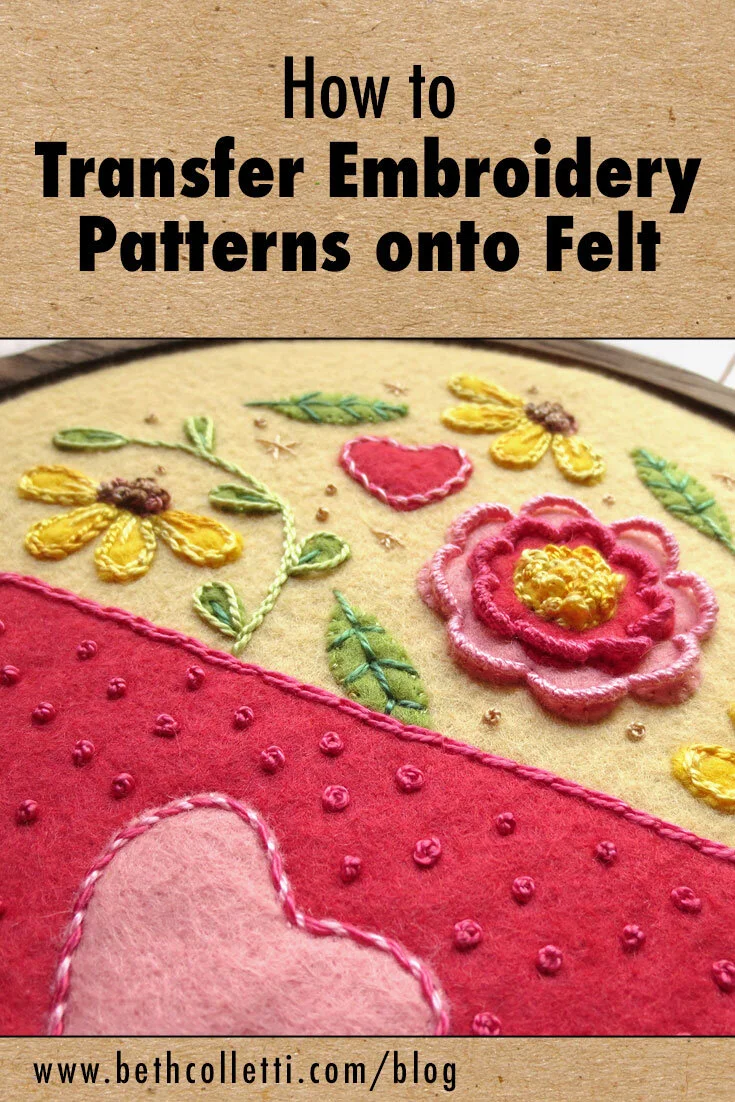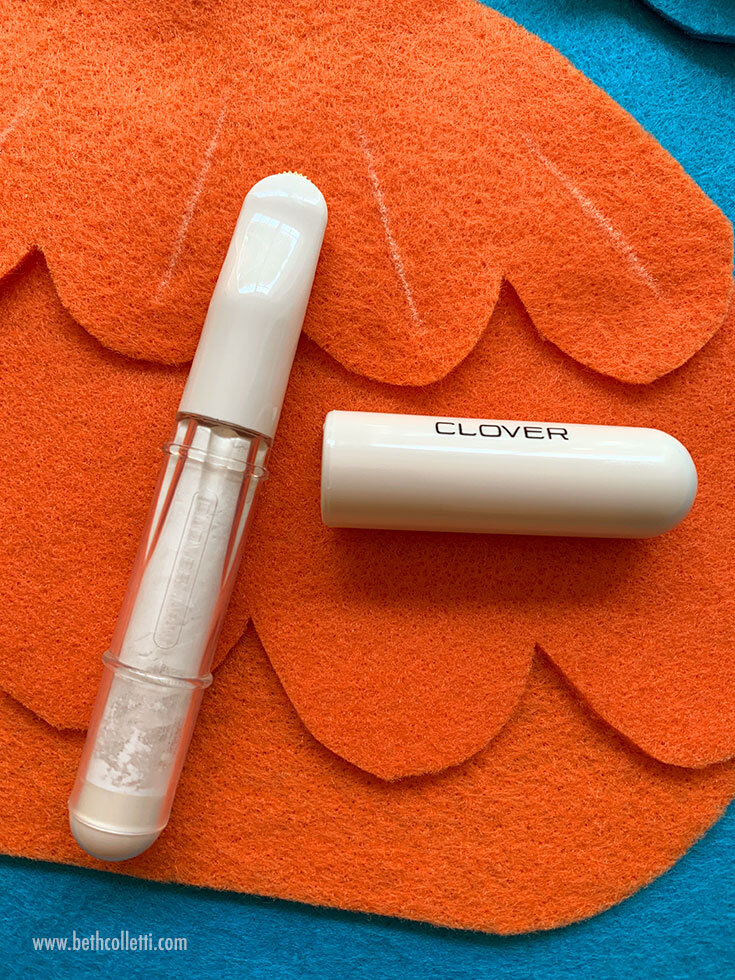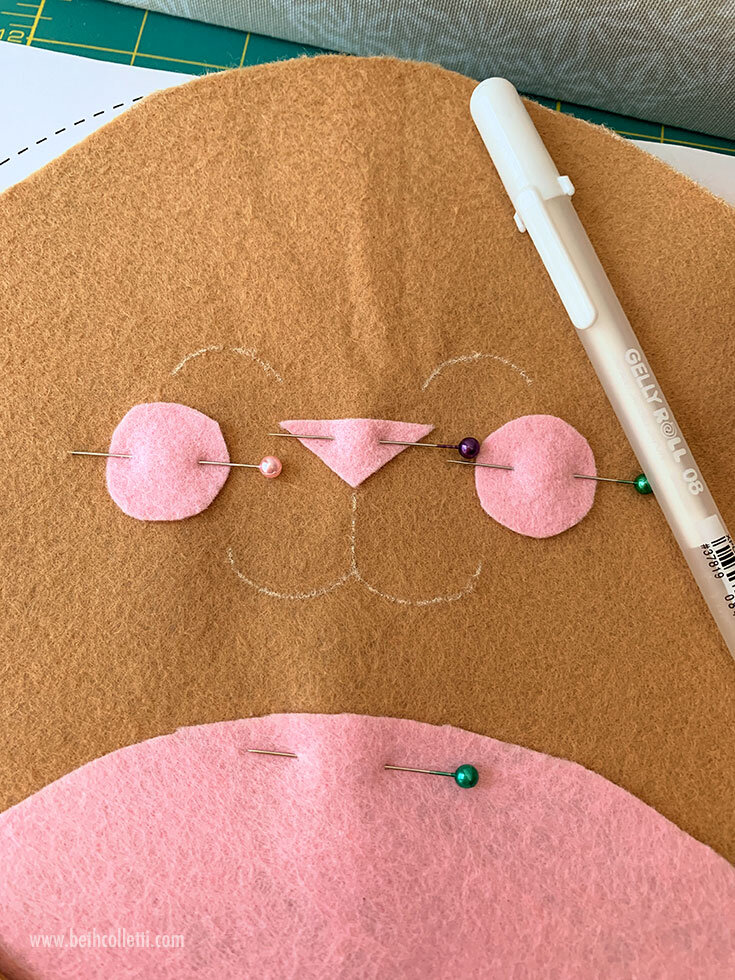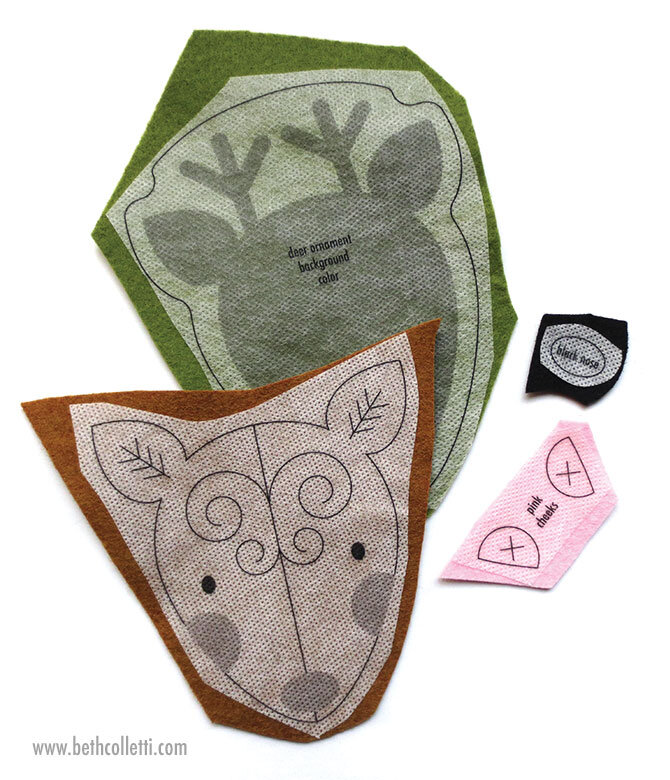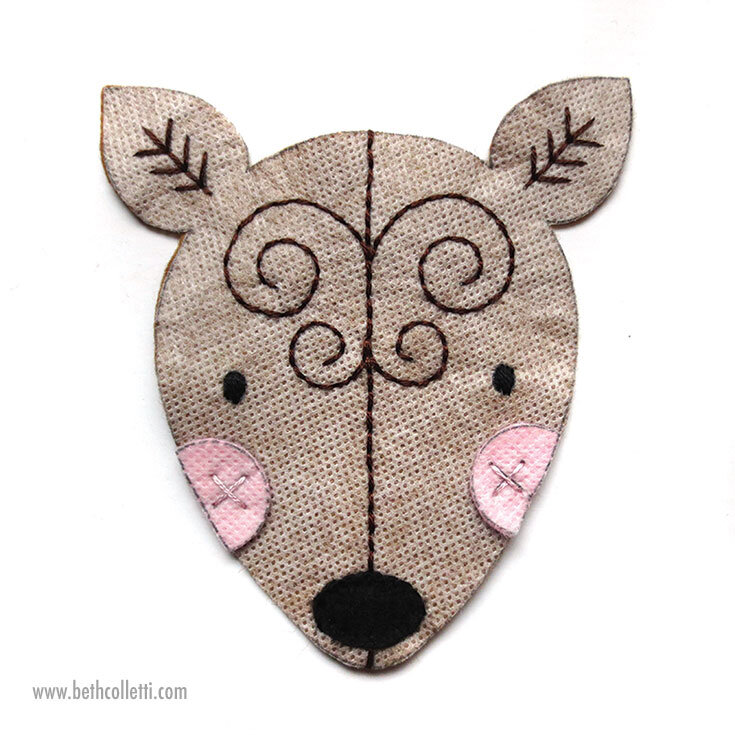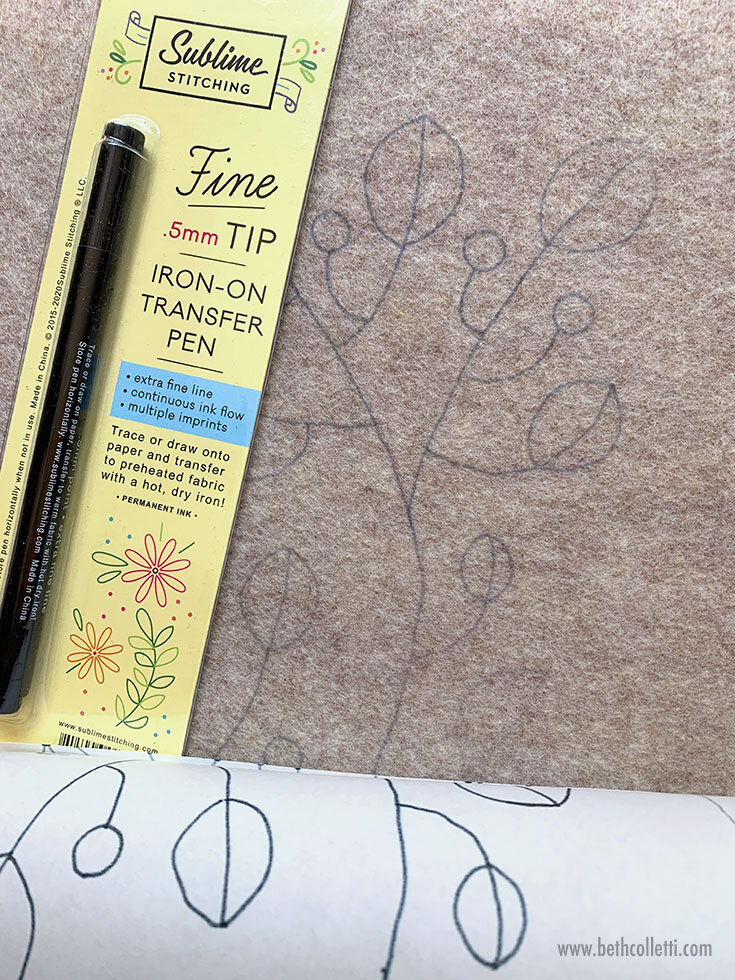(From time to time I will use affiliate links for products that I love, or that I think you will find useful. Should you choose to purchase with the provided links, I will receive a small commission from the companies I work with at no cost to you.)
Working with felt is a great way to dip your toes into the wonderful world of hand appliqué. It’s an easy fabric to start with because it doesn’t fray, making the whole appliqué process that much simpler. But what if you want to transfer a more detailed embroidery pattern to felt? This process can be a bit tougher because many of the traditional embroidery transfer methods don’t work well on felt’s fuzzy texture.
But don’t give up hope! Rather than scrapping felt for your stitching projects, work with its features to create some truly unique embroidery! Each of the methods below are suitable on felt (whether you use craft felt, pure wool felt or a wool felt blend), but are best for different types of patterns. I hope you enjoy experimenting with them to discover some new ways of enjoying embroidery on felt!
If you want to layer felt shapes…
…Try Freezer Paper
How to use it: Freezer paper is an easy-to-use method for tracing and cutting out clean shapes (even complex ones) from your felt for hand appliqué projects. Whether you are working with polyester craft felt, a wool blend felt, or 100% wool felt, the freezer paper method for tracing shapes is the same. First use a pencil to trace your shapes onto the matte side of your freezer paper. Next put the freezer paper on top of your felt with the waxy side facing down. Briefly press on it with a warm iron and your template will be temporarily bonded to your felt so you can cut out your felt shape with ease. Click here for a full tutorial on the freezer paper method.
If you want to add some simple sketched lines to felt…
…Try a Chaco Liner
How to use it: This unique Chaco liner from Clover is a great tool to have for felt stitching projects. It comes in different colors and contains powdered ink which is dispensed from a small wheel that you roll on your fabric as you draw your lines. I find it best for making freehand lines or outlining simple shapes on felt that you later stitch over. The marks can be brushed out pretty easily, though heat may make them permanent. Try combining sketched details from a Chaco liner with your felt appliqué.
Chaco liners are great for drawing simple shapes and the ink brushes out as you stitch over it.
If you want to draw on felt…
…Try a Sakura Gelly Roll Pen
How to use it: If you want to draw more easily on felt, I love using a white Sakura Gelly Roll pen which is visible on most colors of felt. These pens work great on the fuzzy texture of felt and the color doesn’t rub out so they can be suitable for a longer lasting project where you need your lines to stay visible. I find it best for making freehand lines or outlining shapes on felt fabric. Try using it with simple stencils, or drawing freehand on any type of felt. Embroider over your lines completely or dab a little bit of water on the end of a cotton swab to gently rub out the white color.
For more permanent sketching or tracing, draw on felt with a Sakura Gelly Roll pen. I find the white pen works on most felt colors.
If you want to transfer a detailed pattern onto felt…
…Try Printable, Dissolvable Stabilizer Paper
How to use it: Using printable dissolvable stabilizer paper, like this product by Sulky, will allow you to transfer a pretty detailed embroidery pattern to any color felt which you can then stitch through. But one important caveat is that you must preshrink your felt if it has any wool in it before using this method. Because dissolvable stabilizer is rinsed out using water, you don’t want your wool felt to shrink after you stitch on it. So make sure you take the time to prep any wool felt or wool blend felt beforehand. Otherwise, this can be a surprisingly handy method for stitching embroidery patterns on felt! For more tips on using and rinsing out printable, dissolvable stabilizer paper, see this article.
Printable, dissolvable stabilizer paper can be used to transfer complex patterns to felt as long as you preshrink your wool felt before stitching and rinsing.
…Or try a Heat Transfer Pen and Tracing Paper
How to use it: A heat transfer pen and heavy duty tracing paper can be used with lighter colored pieces of felt to transfer a pattern. Because of felt’s fuzzy texture, the transfer marks will not be as dark or as crisp on felt as they would on other fabrics, like cotton, so make sure to stitch over your lines completely. This method is a possibility for detailed patterns when you don’t want to deal with preshrinking felt or rinsing anything with water. For more tips on using a heat transfer pen and tracing paper, see this article.
The heat transfer method can work great to transfer complex patterns on light colored felt.
Stitching on felt really is a lot of fun and opens the door to so many possibilities, because it’s a fabric that doesn’t fray and can be easily hand-sewn as a result. Whether you are making wall art, plush stuffed animals, pillows, Christmas stockings, or more, I hope you give it a try and see all that you can do!

